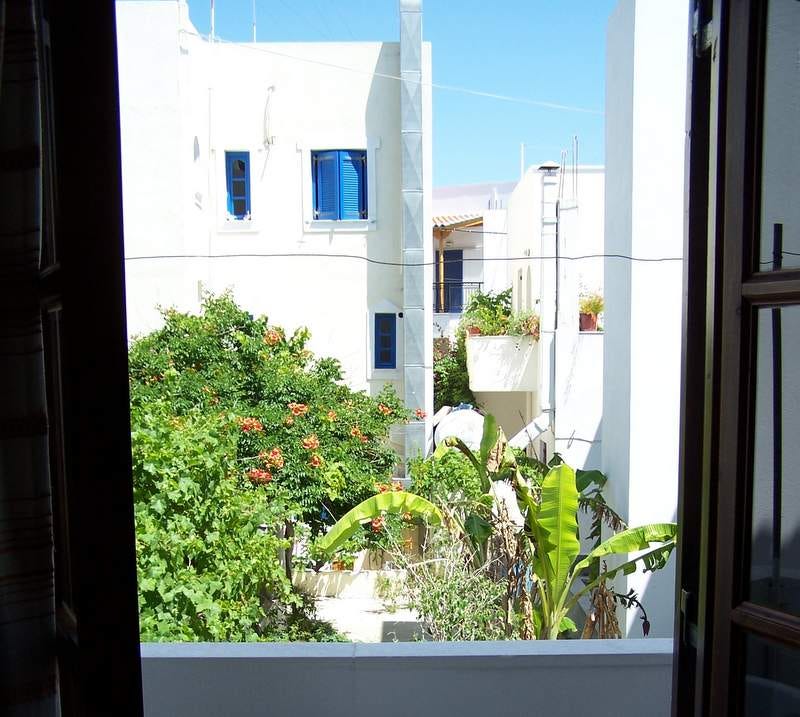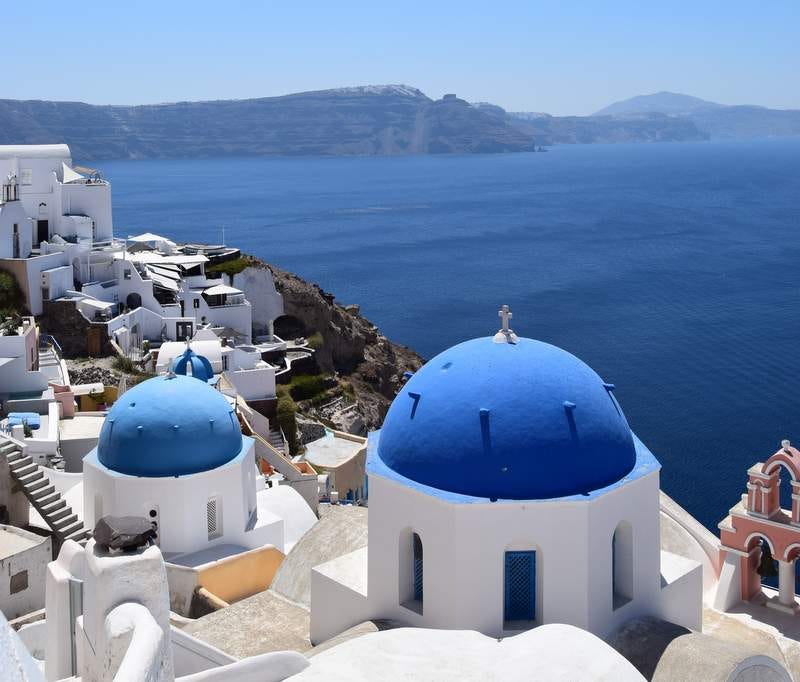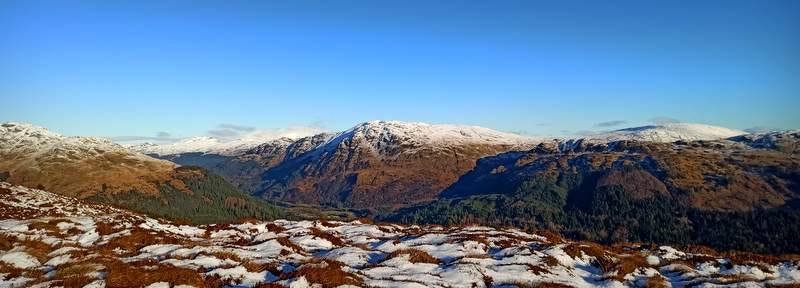Greek Shelves & Colourful Questions
(Plus a big "I'm a total idiot" update)
Hello! This is Everything Is Amazing, a newsletter about curiosity, attention, awe and wonder.
And here’s some good news:


Ed Yong’s new book is about what animals can teach us about how endlessly amazing the world is. My preordered audiobook copy arrives in the UK on June 30th, so I haven’t started it yet - but I’m pretty confident that it’ll be the best thing I read in 2022.
OK. To today’s topic, which includes - hey, I have a storytelling course for you! If you want it. More about that shortly.
And before that, in the wake of the Everything Is Amazing season 4 wrap-up a few days ago, and as an introduction to what the next season is about, I’d like to tell you about the time I fell in love with a shelf.
But first - well, how do you feel about this thing? Do you want *all* of it? Would you consider (gulp) a paid subscription?
Just to prove that you’re not alone in thinking yes, this newsletter is strange but maybe not the bad kind of strange, here are some extremely interesting people who have said nice things about it:
"Everybody needs to subscribe to…Everything Is Amazing. We need to be reminded now, more than ever, how much there is in the universe to be in awe of."
- Mary L. Trump, psychologist, bestselling author of “Too Much & Never Enough” and “The Reckoning,” and Substack newsletter writer of The Good In Us.
“Everything IS amazing, and this newsletter points that out with glee. Lots of very cool facts about, well, everything.”
- Phil “Bad Astronomer” Plait, astronomer, writer, author of the Bad Astronomy Newsletter, popular science communicator (Twitter), and formerly part of the Hubble Space Telescope team.
"If your inbox is not that fun, you can do at least one thing to change that and subscribe to Mike's newsletter, which provides a weekly dose of wonder and joy.”
- Brendan Leonard, author of I Hate Running and You Can Too: How to Get Started, Keep Going, and Make Sense of an Irrational Passion, and writer at Semi-Rad.com (home of some of the funniest writing on the Internet).
“The Everything Is Amazing newsletter is a perfect investment in your year. Mike’s deep dives into the fascinating stories behind everyday things make him a compelling guide to the world. He is also ridiculously funny. I’ve long enjoyed his writing, and I am sure you will too!”
- Jodi Ettenberg, lawyer-turned-curiosity-writer, author of the award-winning Legal Nomads and the newsletter Curious About Everything.
I should say something here about how incredibly awesome my newsletter is, but I’m British and we just can’t. Sorry.
Instead, I’ll just say that I’d be delighted and grateful to have you as a paid supporter, whete you’d get access to some exciting new things I'm doing (see below), plus the satisfaction of knowing you’re helping me confuse even more people.
Thank you.
Okay, back to that shelf.
It’s 2007, and I’ve just arrived at my accommodation on the Greek island of Naxos.
I’m exhausted to the point of delirium (this may explain what happens next) and I’m suffering the early stages of the worst sunburn of my life. Also, my host has presented me with a Greek coffee: this is where they leave the grains in, & they sink to the bottom of the cup to form a powerful sludge that continues to pump out caffeine until the second you drink it, creating something between a beverage and a roundhouse kick.
I thank my host. I sit by the window and slump with exhaustion. I stip my coffee. Then the caffeine pulses, tsunami-like, through my bloodstream - and I notice the shelf.
I’m a sucker for ogling people’s book-shelves. You can tell so much about them as people. (If you’re going to be judgemental about folk, at least do it properly. Go for the brain.) But this nosy habit is either difficult or impossible when you go travelling. You don’t recognise any of the books, and you might not be able to read the language. Zero opportunities for making small-minded assumptions! Sigh.
This shelf is no different. I can’t read any of the books on it. But who cares, because look at the colour of that shelf!!!!
This is my first opportunity to see Cycladic Blue up close - that luminous, piercing pale shade of sky-blue that seems lit from within, which you’ll find all across the Greek island chain of the Cyclades.
However it first came about - legend has it that Frederica of Hanover, Queen Consort of Greece from 1947 to 1964, gave it a big push at one point - someone realised blue would be a terrific compliment to the whitewashing that’s been required by law across Greece from 1938 onwards. (At this time, limestone whitewashing was seen as a good way to combat cholera).
If the walls of every house were white, and the details were picked out in sky-blue, every town and village would be the colours of the Greek flag! What a boost to national pride that would be - as well as looking profoundly easy on the eyes.
This smartly complements the practical benefits: white reflects far more sunlight than darker colours and keeps building interiors cool, while a very common household cleaning agent called loulaki is (or was) the easiest way to create a second colour, since its solution reacts with limestone plaster to turn blue.
But forget practicality. It’s just gorgeous. The closest to it that I’ve seen anywhere else is when I visited Chefchaouen in Morocco, with its famously photogenic blue-washed interior. Check out Jodi Ettenberg’s photoessay from her visit to see what I mean. But even then, it wasn’t exactly like the Greek islands blue. There’s something special in the Greek islands version. What? I don’t know, even though some part of my mind seems absolutely certain of it.
(If that wasn’t weird enough - like many language families of the time, Ancient Greek didn’t seem to have a specific word for what we now call “blue”, instead referring to all colours at the darker end of the spectrum - violet, black, dark blue, brown, or dark green - as kyaenos, from which we have derived the term “cyan”. And that begs a very interesting & very weird philosophy-of-science question: if they couldn’t name it, did they even see it? Is the colour blue a modern invention? Are we modern folk seeing a colour that didn’t exactly exist, in the way we think of it existing, until we came along?)
Cycladic Blue is my favourite colour, ever since this rather embarrassing afternoon on Naxos in 2007 when that Greek landlady wandered into my room to find me, um - fondling her book-shelf. But look: I was fascinated. The combination of that amazing colour, which threw the sunlight back against my fingertips in that same mesmerising shade, and, and the smell of it…and mmm, how it felt against my face…
OK, I’ve lost you. But hey, I promise I wouldn’t make fun of YOU when you start ranting about how much you love your favourite colour. I know you have one! We all have, and they’re all different. (And - isn’t that interesting? Why is that? Why are there no universally “good” and “bad” colours? Are there any?)
I find it easy to ask interesting questions about colours - and then realise I have no idea what the answers are.
So I’m spending the next season of Everything Is Amazing hunting for them.
I’ll look at the colours that don’t actually exist - in fiction, where the trick’s being played by storytellers, and the real world, where the trick’s being played by our brains.
I’ll ask, “Are there people alive today who can see more colours than the rest of us?” (The surprising answer seems to be Yes, and it’s A LOT more.)
I’ll look at how colours directly affect our mental and physical wellbeing, and at how the colour of someone’s coat can change the way you think about their competence & intentions towards you - or send your blood pressure rocketing.
I’ll look at the active role that colour plays in our lives: not as a superficial, pleasant-but-inconsequential gloss over things, but as a kind of ‘visual drug’ that can alter perception, change the way our brain works, and steer our behaviour in ways we’re barely aware of…
It’s all going to get super-colourful. I can’t wait.
Also, as an experiment, I’m doing something a little different with the paid-subscribers-only articles this time.
I’m an ex-archaeologist. More accurately, an ex-archaeology student (with a particular focus on landscape) who worked for a bit as an archaeologist. And that was - over 20 years ago. (I’m currently making arrangements to meet up with some University friends before the year ends, and we’re all yelling at each other over WhatsApp, “that was 20 years ago, guys, what the actual eff?”)
I’ve kept up with a little of the reading, but not much. I’m itching to give myself an excuse to dive back in and see what’s changed & what’s blowing the minds of modern landscape archaeologists. So - what better reason than a short “season-within-a-season” of this newsletter, about how the landscapes we live upon & within affect our behaviour?
Specifically, this is the topic of living geology. People who hear the word “rocks” and immediate fall asleep are missing…everything, but in particular, they’re missing how geology affects every single part of our lives, down to the water we drink and the food we eat. (Soil is the fragile living geology that gives most of us the energy we need to stay alive - even though we are, at last, finding ways to get the larger part of our calories elsewhere.)
As I said at the end of my Zanclean Megaflood Twitter thread, GEOLOGY IS NOT BORING. And I hope I can prove it, in the paid-access version of season 5 of Everything Is Amazing, running alongside the free list’s colour-focused main event - so everyone reading it will look down at their feet & think…
STORYTELLING COURSE UPDATE:
I’M AN IDIOT (SO HERE’S A THING)
As I said previously, I’m reworking a nonfiction storytelling course that I used to run for bloggers, and readying it for relaunch.
I’d say there’s a good argument for newslettering being the new blogging - especially when newsletters have Web-published versions, like Substack does (eg. here).
So, that’s why I’m bringing it back in an updated form. It’s the same storytelling principles I employ to write the stories for this newsletter - and a former student said it helped her win a runner-up prize in National Geographic’s yearly Travel Writing competition, which means a lot.
The updated version is coming. But the other day, after chatting to a subscriber (thanks Gina!), I realised…the old version was just sitting there, years after the last of my 100+ former students went through it, a big silent Mailchimp automation sequence with everything ready to go - just waiting for me to put someone’s email address in.
How about yours?
This is why I’m an idiot. As well as future access to the new form, I could have also been offering you instant access to the old version, delivered as eight weeks of emails (the details are here).
The last time I updated it was 2019 - but it’s 99% made of timeless principles of telling good nonfic stories (and it’s up to date enough that the final chapter mentions this really great newslettering platform I just discovered called “Substack”).
If you become a paying subscriber to Everything Is Amazing (or if you’re an existing paid subscriber), you can get free access to this version of the course this week (or any time within the next few months), and the newly-adapted version of it when it’s ready in the near future.
If that sounds like something you’d want to do, sign up for a paid subscription - and later this coming week, I’ll get back to you (and every other paying subscriber) to ask if you want to take the old version of the course, which I’ll get rolling immediately.
Thank you!
- Mike
Images: Matthew Waring; Mike Sowden.







#1 - hope you are feeling better. Most important!
#2 - I love blues. So many shades. Do you like Cerulean blue? One of my favorites.
#3 - Can we access your non-fiction story telling course? The 'old' link seems wonky. The new link....coming soon? Sounds like fun, especially written by you!
#4 - Have you read Storyworthy by Matthew Dicks?
I'm looking forward to seeing more about this story-telling course.